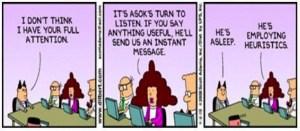This article is about heuristics for assessing the quality of a publication: emphasis on Heuristics. Consequently, there will be always a case where these guidelines will be incorrect. Unfortunately, the alternative is been able to read and categorize all the scientific articles in the world; I am pretty sure that you do not have that much time.

If that is the alternative some heuristics may guide you in forming an opinion prior reading a scientific paper. This opinion is “by definition” a bias and you should be aware that may be misleading. In other words, you will answer to the question “what is a good research paper?” or “is this publication worth reading?” before reading the paper.
First of all, there is not a magic answer to these questions. A most heuristics for assessing the quality of a publication will have flaws.
A good publication is a publication that adds value to what you are trying to achieve. There is no escape, you first have to read the article and then judge it on your own. Both Einstein and Shakespeare they had a moment in their life when they publish something and they had zero citation and zero positive review.
Nevertheless, let’s consider the following heuristics:
- (i) Is the abstract scientifically sound? Is it formulating an hypothesis? Is it summarizing the performed experiment(s) for validating the hypothesis? If the answer is no. Well you may be suspicious.
- (ii) Does the article has citations?Obviously, the newer it is the less citations is going to have. However, a lot of citations just imply that the article has been mentioned by colleagues and nothing about the reason why.
- (iii) How citations are distributed over the time? A lot of citations right after the article was published and nothing over the years may indicate that finding are no longer of interest of the research community. Alternatively, the ideas may have been replaced by a “a better one”.
- (iv) Do Authors keep citing their previous works? If that is the case the article may be just a small increment of an existing idea already published and you may want to go directly to “its origin”.
- (v) Is the author known among the research community? You should always think with your own head, however some people are known for been very productive researchers and this may serve you as a shortcut.
- (vi) is the journal/conference considered a good venue? Short answer: in this respect, probably your department (or University or Research Institute) maintains a list of Journal that are considered of “good quality”. These are a list of venue that your “local scientific community” consider respectable. Obviously this list is not exhaustive but can be a starting point.
6 Heuristics for Assessing the Quality of a Publication
Click To Tweet
These are 6 heuristics for assessing the quality of a publication. However, a long answer to the point (vi) requires some understanding on how scientific venues (such as journals and conferences) work and I will make a dedicated article on the topic.
